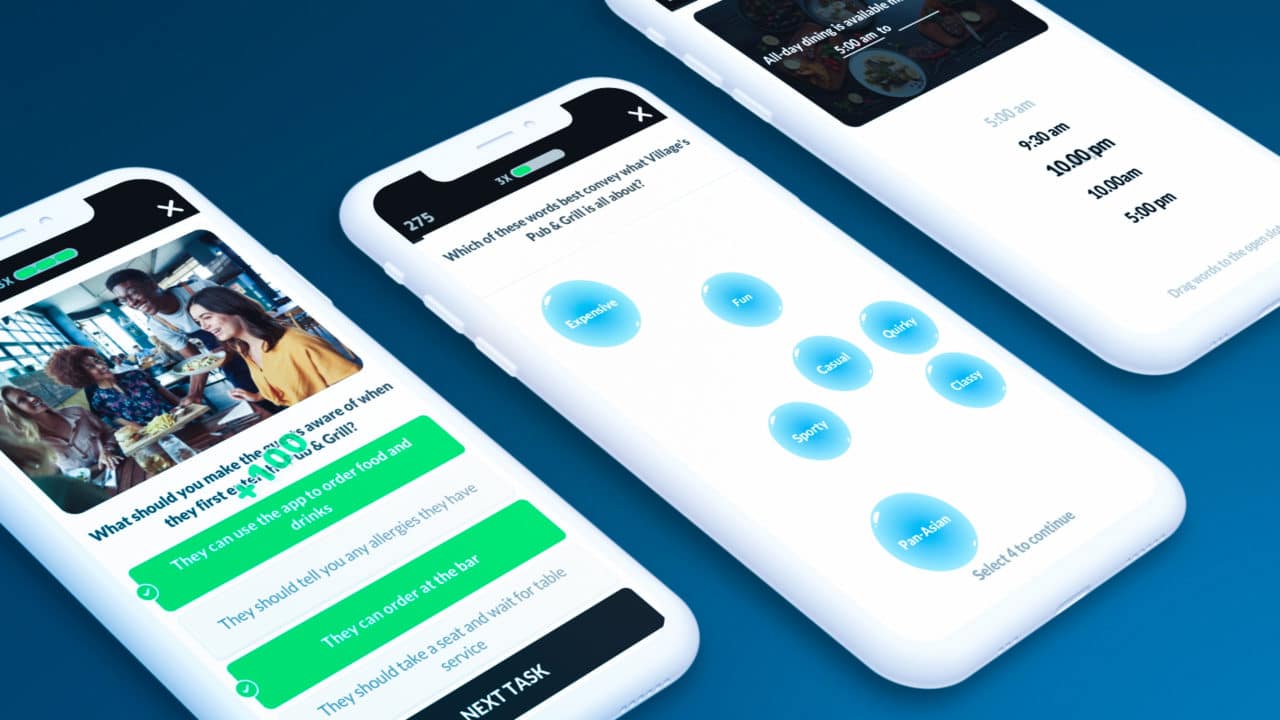What is bite-sized learning?
In its simplest form, bite-sized learning is breaking down large blocks of content into manageable and digestible chunks.
Employee engagement and enablement is vital in driving productivity, retention, profitability, and overall wellbeing. Unless you want a distracted workforce, the usual all-day training sessions are a no-go.
With bite-sized training, learning becomes less intense and enables your learners to dip in and out of training at a pace that suits them best. It’s great for busy schedules.
Training little and often makes content stick, which is what bite-sized learning is all about.
Bite-sized training is backed by research too. According to learning architect Ray Jimenez, by creating micro-courses learning developers can reduce development costs by 50% and increase the speed of development by 300%1.
Why is bite-sized learning effective for employee training?
What sounds more effective: quicker bursts of highly focused training or long, drawn-out, unproductive sessions? With bite-sized training, your employees start to absorb content more easily, anytime, anywhere.
The post-pandemic world now sees the majority of people hybrid working. Changes in shift patterns and company organizations have always changed the way people engage with corporate training. The immediate accessibility of bite-sized learning encourages learners to use any spare time to train, making them more productive.
Bite-sized learning acknowledges the challenges the modern-day employee faces. By leaving scheduling to employees, you’re offering them autonomy to decide when they train.
This makes training more manageable, while minimizing interruptions and increasing productivity.
Why is bite-sized training important for employers?
If your organization is in the habit of training everyone in all-day, classroom-based settings, this might feel like a serious change. But don’t rule it out. The statistics speak for themselves.
According to research from Software Advice, 58% of employees would be more likely to use their company’s training tools2 if they were broken up into smaller and more practical chunks. Not only is it easier for you to maintain but you’ll also constantly win the competition for your employees’ attention. And you can relax in the knowledge that they’re still learning, whilst completing the job at hand.
What are the benefits of bite-sized learning?
Once you’ve got bite-sized learning nailed down, it can lead to all sorts of benefits.
Increased retention
You might be familiar with the concept of Hermann Ebbinghaus’s Forgetting Curve. According to research, within one hour of learning, people forget an average of 50% of newly acquired knowledge3. Remarkably, this reaches 70% after 24 hours and 90% within a week. This is because your brain is being overloaded with information.
Bite-sized learning can help combat this. Building more compact training modules with concise information will reinforce learning and help close the knowledge gap.
Cost-effective
Think about your organization’s annual spend on resource intensive training. Online bite-sized learning will cut it down drastically. Take away the hassle of hiring event spaces, training instructors and materials.
For example, insurance company Hiscox reduced 60 hours of classroom-based training time to just three hours. To do this, the insurer harnessed elearning principles to build the world’s first underwriter simulator, allowing them to deliver scalable training to its employees.
The demand for mobile learning
As tech is advancing and people are becoming busier, the demand for mobile learning is growing every single day. Your employees need something portable that they can access anywhere, anytime.
According to Lynda.com (now a part of LinkedIn Learning), mobile learners complete training courses 45% faster than their desktop equivalents4.




